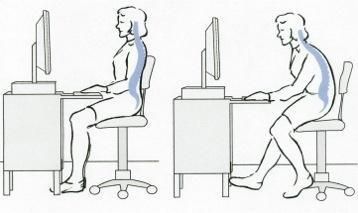Newsletter May-June 2014

Hello,
Welcome to the latest newsletter. I hope you enjoy reading this edition. If you decide, once you’re on this page, you’d like to go to the main website instead just click on the logo above.
Here is the 2nd part (of 4) which looks at the general causes behind musculoskeletal pain.
Don’t forget I’m on Facebook and Twitter, I would be grateful if you’d follow the links at the bottom of the page (in the contacts section) to show your support.
Kind Regards,
James.
General Wellbeing - The main causes behind musculoskeletal pain
To recap from the last newsletter, I often get asked by clients, questions like ‘how did this (injury/pain) suddenly happen?’. In my mind, the answer is usually because of one of 4 reasons:
1. Overuse / Overtraining
2. Poor posture
3. Trauma
4. A medical condition
In fact, all 4 can be inter-related as the reason, it may not be just one alone. For example, a medical condition (such as arthritis) could cause pain and swelling in itself, but could also lead to poor posture, which in turn could lead to overuse, or overtraining of structures elsewhere in the body.
Extrapolating this idea, you could easily substitute a medical condition, for a trauma (such as a strain, or sprain). The injury itself can create it’s own pain, swelling etc. but then during the healing process your posture and movement could change (a limp for example) leading to poor posture and so on. In this newsletter we’ll look specifically at No.2 on the list above; poor posture.
2. Poor posture
In the absence of any of the other influencing factors, I believe poor posture is mainly to blame for a whole range of musculoskeletal aches and pains. As a species we’re incredibly adaptable both physically and mentally, in Western society though we are leading an increasingly sedentary lifestyle. What does this mean for our bodies though and why is it a problem? The best way to describe the effect is to compare a sedentary lifestyle, to how a fitness and exercise program works.

However, before we get to that it is also important to understand the different types of muscle in the body, in terms of function, for both movement and posture. There are mobilisers, which deal with movement and stabilisers which deal with posture. If you have a ‘good’ posture your stabilisers will work effectively and efficiently, if this is the case the chances are you will be less likely to suffer from posture related musculoskeletal pain. If you have a poor posture the stabilisers cannot do the job of holding your body on their own, and therefore some of your mobilisers are recruited into helping them. The problem that arises when this occurs, is those mobilisers are put into what’s known as an isometric contraction (the same as if you lift your arm straight out from the side of your body and hold it there indefinitely).
The isometric contractions themselves are not an issue, they can and will help build strength. The problem is that mobiliser muscles are not designed to hold isometric contractions for long periods of time and if you do, you are effectively ‘overtraining’ the parts of the parts of the body with that physical stress. This along with the weakening of the ‘opposing*’ muscles in other areas of the body as a result of a sedentary lifestyle, is what can lead to pain.
*remember for a mobilising muscle to contract another has to relax (think biceps and triceps)
To compare it to a general fitness program, in contrast you would do lots of different activities to train, get all the muscles toned, fit and keep them healthy. You wouldn’t, or at least in my mind shouldn’t just do endless amounts of one type exercise. By maintaining poor posture you are doing exactly that, but on a very low intensity, which is why you don’t really notice the damage it is doing to begin with.
